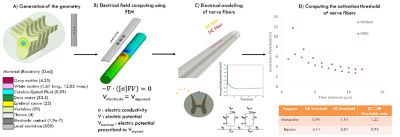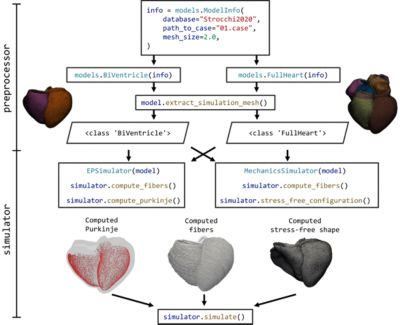-
-
Accédez au logiciel étudiant gratuit
Ansys donne les moyens à la prochaine génération d'ingénieurs
Les étudiants ont accès gratuitement à un logiciel de simulation de classe mondiale.
-
Connectez-vous avec Ansys maintenant !
Concevez votre avenir
Connectez-vous à Ansys pour découvrir comment la simulation peut alimenter votre prochaine percée.
Pays et régions
Espace client
Support
Communautés partenaires
Contacter le service commercial
Pour les États-Unis et le Canada
S'inscrire
Essais gratuits
Produits & Services
Apprendre
À propos d'Ansys
Back
Produits & Services
Back
Apprendre
Ansys donne les moyens à la prochaine génération d'ingénieurs
Les étudiants ont accès gratuitement à un logiciel de simulation de classe mondiale.
Back
À propos d'Ansys
Concevez votre avenir
Connectez-vous à Ansys pour découvrir comment la simulation peut alimenter votre prochaine percée.
Espace client
Support
Communautés partenaires
Contacter le service commercial
Pour les États-Unis et le Canada
S'inscrire
Essais gratuits
ANSYS BLOG
June 7, 2023
Advancing Healthcare Through Academic Events
Attending academic events helps current industry experts and emerging scholars keep up with trends, understand new topics, and receive feedback on novel ideas.
Ansys attends many healthcare-focused academic events to network and learn while showcasing its best-in-class products.
Previous Events
International Brain Stimulation Conference
The International Brain Stimulation Conference, hosted in Libson, Portugal, from February 19-20, brought together neuroscientists from around the world to discuss brain stimulation methods that are transforming research on brain mechanisms and providing new approaches to therapeutics for brain disorders.
At this conference, Ansys presented its collaborative work with the university hospital of Université De Poitiers, located in Poitiers, France, which is recognized for its psychiatric research center. The partnership is developing a workflow for clinicians to address scientific questions related to transcranial direct current stimulation (tDCS) for obsessive-compulsive disorder and depression.
The procedure is a noninvasive neuromodulation treatment for psychiatric diseases. Its success critically depends on patient anatomical structure and tissue properties. Computational modeling offers a valuable tool for understanding a patient’s responsiveness to tDCS. Using a PyAnsys-based tool for automatic, personalized parametric computational modeling of tDCS, clinicians can correlate clinical response results with quantitative metrics obtained from personalized parametric finite element simulations.

Pipeline for creating personalized brain stimulation models
The workflow starts with MRI segmentation to obtain the contours of structures of interest in the head. Then, electrodes are constructed and a current is applied in a parametric and customizable fashion.
The workflow was successfully applied using both open-access MRI data and in-house data. Clean segmentations were obtained, showing a clear distinction between head structures. Researchers obtained current densities that matched the ranges reported in other studies.
Cardiac Digital Twin Workshop
Ansys both attended and presented at a cardiac digital twin workshop at the King’s College of London on March 7.
This workshop brought together top-level academic and industry experts of the heart modeling community. Presenters from academia, hospitals, and research expressed their vision regarding the introduction of cardiac digital twins in clinical practice.
In the presentation, Ansys representatives explained the company vision to build sharable, physiologically relevant model examples and workflows to address application-specific needs and facilitate the adoption of Ansys LS-DYNA in the heart modeling community.

Activation times in a biventricular geometry (left). Pressure-volume loops in the right and left ventricles, illustrated in red and blue, respectively (right).
International Symposium on Computer Methods in Biomechanics and Biomedical Engineering
Ever since the International Symposium on Computer Methods in Biomechanics and Biomedical Engineering (CMBBE) originated in 1991 in Paris, the meetings have developed into a specialized group for those involved in computational biomechanics. Through the years, the CMBBE symposium has offered a platform for networking and sharing cutting-edge research and projects related to computer methods in biomechanics and biomedical engineering.
Ansys presented its collaborative work with the Institut Pprime, a lab created in 2010 by the Centre national de la recherche scientifique (CNRS). Representatives shared research surrounding the PRISMATICS (Predictive Research in Spine Management/Neuromodulation and Thoracic Innovation in Cardiac Surgery) project from the university hospital of Université De Poitiers. The project’s goal is to model spinal cord stimulation to improve the clinical response of implanted patients suffering from chronic pain in the lower back. Ansys presented a model developed using Ansys SpaceClaim and the pyMAPDL solver to represent the deformation of electrodes once implanted in the peridural space. The purpose is to assess the impact of this deformation on the electrical response at the spinal cord level.

Workflow for creating a spinal cord stimulation model for chronic back pain applications
Masters of Aorta and Structural Heart Surgery 2023 (MASH)
Hosted in Bastia, France, this three-day conference for cardiovascular surgeons and cardiologists focuses mainly on the aorta. The first two days focused on clinical innovation presentations and panels, and the third day featured research presentations. Ansys and its clinical partners — the university hospitals of the University of Rennes, the University of Burgundy, and the University of Toulouse — presented on topics such as ascending aorta aneurysms and aorta dissection.
IA4Care Santenov 2023
Santenov aims to federate, embody, and strengthen Dijon, France’s health ecosystem while promoting innovative products and services to meet health challenges. This annual roundtable focuses on scientific and technological advances in digital health as part of a symposium on artificial intelligence for health technologies.
Upcoming Events
Functional Imaging and Modeling of the Heart
The 12th annual Functional Imaging and Modeling of the Heart (FIMH), held in Lyon, France, from June 19-22, aims to integrate state-of-the-art research and novel development efforts in cardiovascular imaging, image analysis, and heart modeling. The event encourages collaboration among experts in cardiology, radiology, biology and physiology with students and scientists working in signal and image processing, imaging, applied mathematics, biophysics, biomedical engineering. Ansys will present a Pythonic package that allows for simulating heart models using LS-DYNA.

Abstract description of the pyheart-lib package that generates heart model simulations in Ansys LS-DYNA
RF Electromagnetics for Medical Implants
Our partner CADFEM AT are organizing a workshop on September 15, 2023, at TU Wien on Digital Engineering Advancing Healthcare: RF Electromagnetics for Medical Implants (cadfem.net). With presentations from CADFEM, Ansys, and Austrian researchers, the event will showcase how simulation can assist in the design of medical implants when it comes to working with radio frequencies and electromagnetic fields. Applications such as hearing aids, insulin pumps, pacemakers, and deep brain neurostimulators using Ansys HFSS will be shown and discussed.
See how Ansys LS-DYNA and Ansys SpaceClaim can help you.